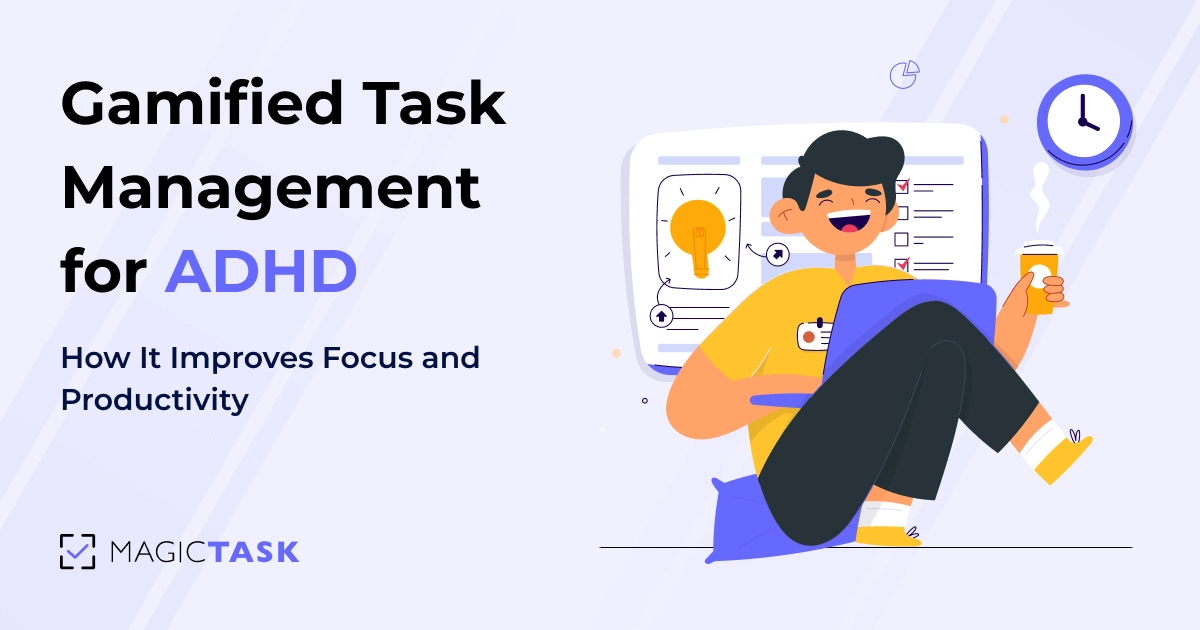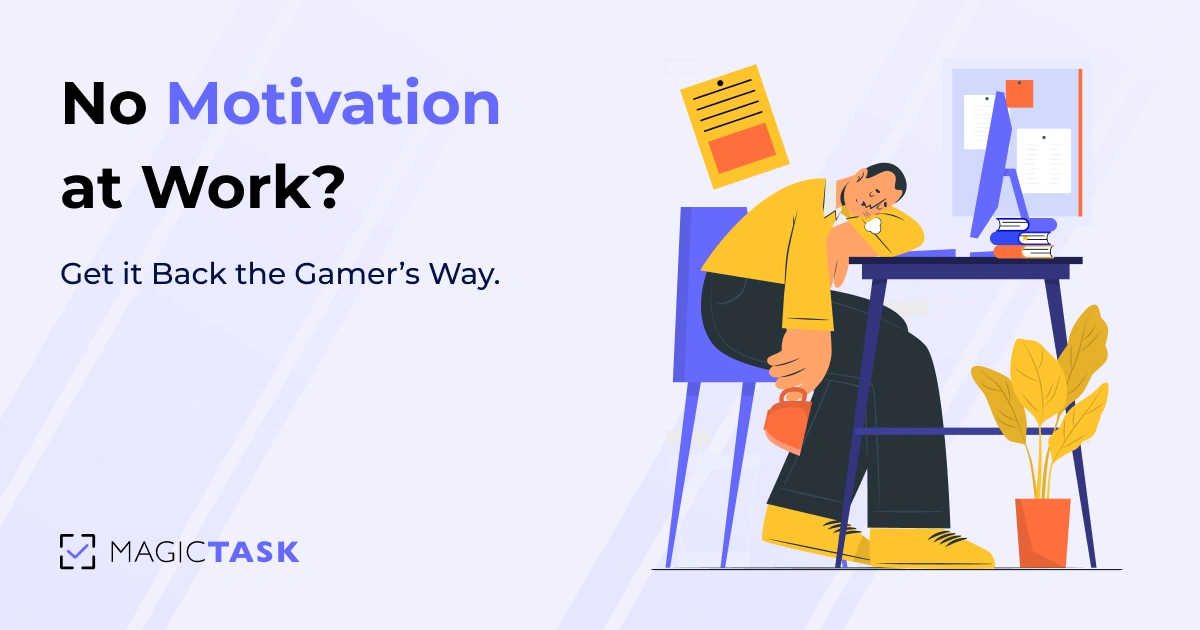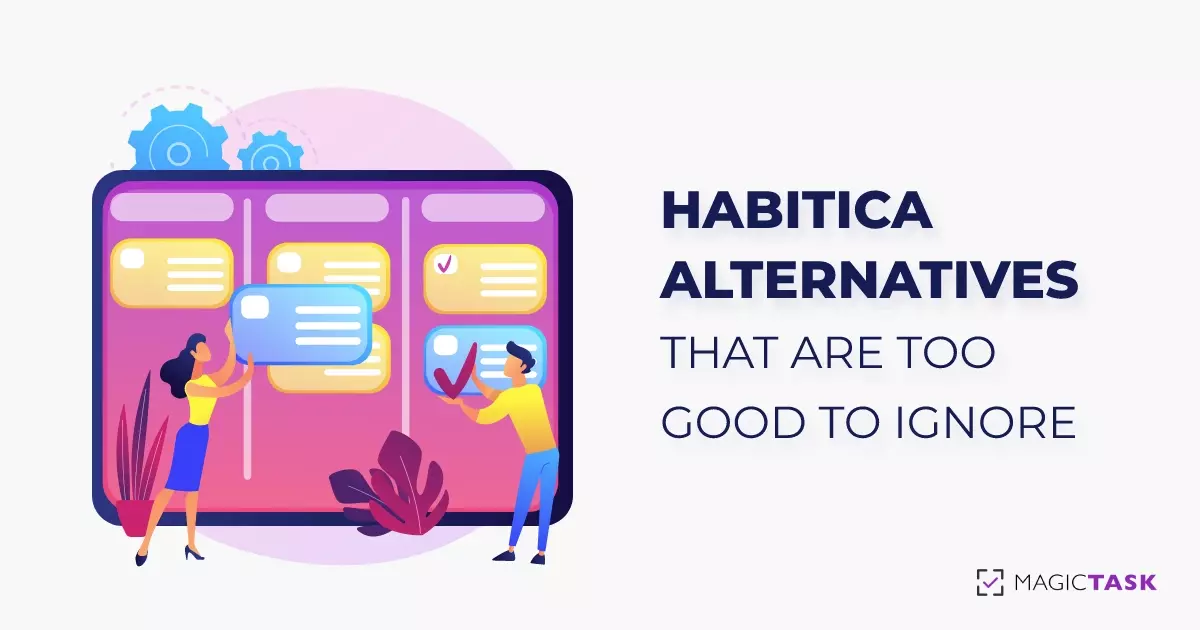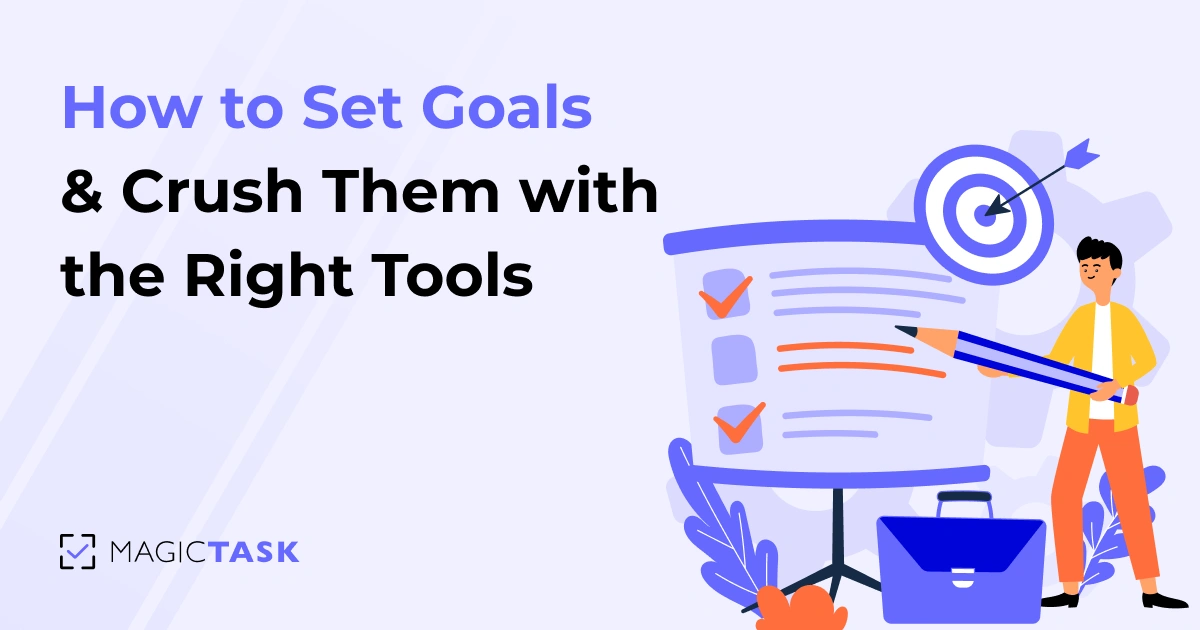9 Effective Ways to Prioritize Your Work and Get Things Done
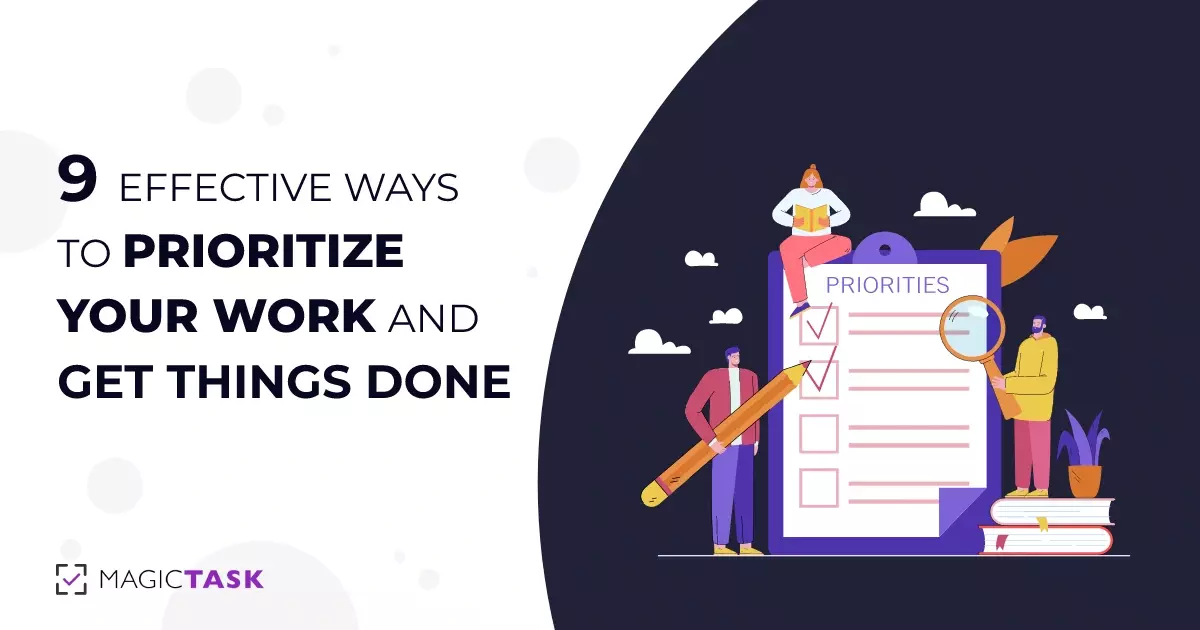
When it comes to getting things done, many people find themselves struggling to stay focused and motivated.
It can be tough to know how to prioritize your work and get the most important tasks done first. And once you finally do start working on something, it's easy to get sidetracked and lose focus.
If you're having trouble getting things done, don't worry - you're not alone. In fact, studies have shown that up to 20% of people consider themselves "chronically disorganized."
The good news is that you can use plenty of strategies to better manage your time and focus on your work. Here are nine practical ways you can learn to prioritize better.
1. Figure Out What's Important With The Eisenhower Power Matrix
The Eisenhower Power Matrix is a simple yet effective tool for time management and prioritization. Developed by President Dwight D. Eisenhower, the matrix helps you focus on your work by identifying which tasks are urgent and which are not quickly.
It contains four different quadrants that help you differentiate between the urgency of tasks. These four quadrants are classified as follows:
Quadrant 1: Do
In this quadrant, you will list down all the tasks that are urgent and important. These tasks should be given first priority.
Quadrant 2: Plan/Schedule
In this quadrant, you will list down all the tasks that are not urgent but important. so you can plan/schedule such tasks.
Quadrant 3: Delegate
In this quadrant, you will list down all the tasks that are urgent but not important. so you can delegate such tasks to other members of the team.
Quadrant 4: Eliminate
In this quadrant, you will list down all the tasks that are neither urgent nor important. so these should be given last priority.
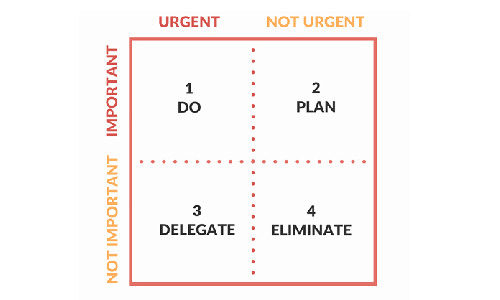
The Eisenhower Power Matrix is a great way to identify which tasks are the most important and need to be given priority. By taking the time to classify your tasks, you can ensure that you're spending your time on the things that matter most.
2. Use The MoSCoW Method To Prioritize Better
The MoSCoW Method is a prioritization technique that can be used to help you prioritize your tasks. It is often used in project management and can be applied to both individual tasks and larger projects.
The acronym “MoSCoW” stands for “Must have, Should have, Could have, Won’t have.” This reflects the order of priority, of how you should prioritize your work, with “Must have” being the most important and “Won’t have” being the least important.
To use the MoSCoW Method, list out all of the tasks that need to be done and then assign each one to a category. “Must have” tasks are the most important and should be given priority. “Should have” tasks are less important but still need to be done at some point. “Could have” tasks are optional and can be done if there is time. “Won’t have” tasks can be safely ignored.
Here is an example of how the MoSCoW Method could be used to prioritize a list of tasks:
- Write a blog post (Must have)
- Create social media posts (Should have)
- Design a new website (Could have)
- Attend a networking event (Won’t have)
As you can see, the “Must have” task is given priority, while the “Won’t have” task can be safely ignored.
3. Eat the Frog and Do The Hardest Thing First

Have you ever heard of the "eat the frog principle"? It's a simple concept that can help you get much more done. Here's how to prioritize your work using this method:
Basically, you just need to start your day by tackling the most difficult or time-consuming task on your list. That way, you'll get it out of the way, and the rest of your day will be a breeze in comparison.
For example, let's say you need to write a report for work. You could start your day by spending an hour or two getting it done instead of procrastinating and doing it at the last minute. Then, the rest of your tasks will seem much easier in comparison.
Or, let's say you need to clean your house. You could start by cleaning the bathroom, which is usually the most dreaded task. Once that's done, the rest of the house will seem like a piece of cake.
The eat the frog principle can be applied to any task, whether big or small. So next time you're feeling overwhelmed, try tackling your most challenging task first. You might be surprised at how much more you can get done.
4. Use the 80/20 Pareto Principle Rule and Make Life Easier
The Pareto principle, also known as the 80/20 rule, is a business guideline that suggests that 80% of outcomes come from 20% of inputs. In other words, most results in any given situation are generated by a small minority of causes.
This principle can be applied to many different areas of business, including task prioritization. When you have a long to-do list, it can be overwhelming to know where to start. The Pareto principle can help you prioritize your tasks by identifying which 20% of activities will generate the most results.
For example, let's say you're a salesperson who is trying to increase your sales figures. You might have a list of tasks that includes making cold calls, attending networking events, and creating social media posts.
Applying the Pareto principle, you would prioritize making cold calls over attending networking events or creating social media posts because cold calling is likely to generate more sales (i.e., it's a more effective use of your time).
5. Simplify Difficult Projects with The ABCDE Method
The ABCDE method is a way of thinking about and approaching problems that can be used in many different situations. It stands for:
- A - Assess the situation
- B - Brainstorm possible solutions
- C - Consider the consequences of each solution
- D - Decide on the best solution
- E - Execute the solution
Let's look at each step in more detail:
A - Assess the situation
The first step in learning how to prioritize your work through this system is to take a step back and assess the situation. What is the problem? What are the potential causes of the problem? What are the potential consequences of the problem?
B - Brainstorm possible solutions
Once you understand the problem well, it's time to brainstorm some possible solutions. There is no wrong answer at this stage, so let your creativity flow!
C - Consider the consequences of each solution
Once you have a list of possible solutions, it's essential to consider the potential consequences of each one. What are the risks and rewards associated with each solution?
D - Decide on the best solution
After considering all of the potential consequences, it's time to decide on the best solution. Which solution has the most favorable risk/reward ratio?
E - Execute the solution
The final step is to execute the solution. This may involve taking action yourself or delegating the task to someone else.
6. The 4Ds Of Time Management to Master Your Time

The 4Ds of time management is a tool that can help you categorize tasks in order to prioritize them. The 4Ds stand for:
- Do it now
- Delegate it
- Defer it
- Drop it
Do It Now: These are tasks that must be done immediately and cannot be delegated or put off. An example of a task that falls into this category would be if your child is sick and you need to stay home from work to take care of them.
Delegate It: These are tasks that can be given to someone else to handle. An example of a task that falls into this category would be if you need to get your car washed, but you can have someone else do it for you.
Defer It: These are tasks that can be put off until a later time. An example of a task that falls into this category would be if you need to buy a new shirt, but it is not urgent.
Drop It: These are tasks that are not important and can be eliminated from your to-do list. An example of a task that falls into this category is if you need to write a thank-you note, but it is unnecessary.
7. Time Multiplication Strategy and Get More Done In Less Time
When it comes to getting things done and trying to prioritize your work better, we all have the same amount of time in a day. But some people seem to get a lot more done than others. How do they do it?
The answer is simple: they use a time multiplication strategy.
What is a time multiplication strategy? It's a way of looking at the time that allows you to get more done in less time.
Here's how it works:
- Instead of thinking of time as a linear concept (e.g., I have X amount of time to do this), think of it as something that can be multiplied.
- For every task you need to do, ask yourself how you can break it down into smaller steps.
- You're multiplying your time and increasing your productivity by breaking down a task into smaller steps.
- Start with the essential tasks and work your way down to the less important ones.
- Remember to take breaks in between tasks to avoid burnout.
By using a time multiplication strategy, you can get more done in less time and increase your productivity.
8. Do The Most Difficult Tasks When You're Most Productive

It turns out that there is a lot of science behind productivity, and when you understand how your body and mind work best, you can start to make some serious progress in your day-to-day life and prioritize your work better.
The most productive hours of the day are generally the early morning hours when you first wake up. This is because your mind is fresh and rested, and you have the energy to tackle whatever comes your way.
If you're not a morning person, don't worry - there are still ways to make the most of your day. be sure to focus on your important tasks around the times when you know you'll be at your best.
So, next time you're feeling stuck, remember that understanding your most productive hours can help you get ahead. Use these hours to your advantage, and you'll be amazed at what you can accomplish.
9. The Ivy Lee Method To Feel Accomplished Every Day
Developed by Ivy Lee, in the early 20th century, this is a very popular system.
Here's how it works:
- At the end of each day, write down the six most important things you need to do tomorrow.
- Number them in order of importance.
- When you start your day tomorrow, work on the first task on your list. Once that's done, move on to the second task, and so on.
- If you don't finish all six tasks, don't worry. Just carry over the unfinished ones to the next day.
The Ivy Lee Method is a great way to prioritize your work and tasks because it forces you to think about what's most important. And, by starting with the most important task, you're more likely to get things done and feel accomplished at the end of the day.
Get Things Done With MagicTask
Now, we are not done yet. These nine tips are a fantastic way to help you get your priorities in order. But, one last thing you can try is using MagicTask.
MagicTask is a task management tool that uses gamification to make work easier and more fun. On one level, you have a clean and simple interface that helps you manage your own work and the work of your team.
On the other level, it's almost like playing an RPG. As you use the app, you gain points. You can use these points to unlock new features of the themes that enhance your experience with a variety of gamification effects.
